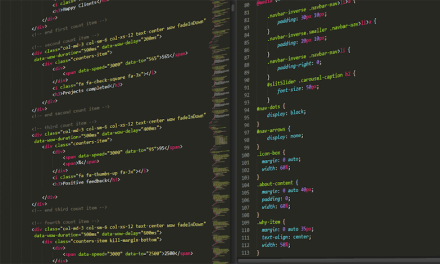Table of Contents
Recruitment Fundamentals: A Comprehensive Guide for 2023 – Master the Art of Hiring Top Talent.
Introduction
Recruitment Fundamentals: A Comprehensive Guide for 2023 is a comprehensive resource that provides essential knowledge and insights into the world of recruitment. This guide is designed to equip recruiters, HR professionals, and hiring managers with the fundamental principles and strategies necessary to navigate the evolving landscape of talent acquisition in the year 2023. From understanding the latest trends and technologies to mastering effective sourcing and selection techniques, this guide offers a comprehensive overview of the recruitment process and provides practical tips and best practices to attract, assess, and hire top talent. Whether you are a seasoned recruiter or new to the field, Recruitment Fundamentals: A Comprehensive Guide for 2023 is an invaluable tool to enhance your recruitment skills and achieve success in the competitive job market.
The Importance of Recruitment Fundamentals in the Hiring Process

Recruitment Fundamentals: A Comprehensive Guide for 2023
The Importance of Recruitment Fundamentals in the Hiring Process
In today’s competitive job market, finding and attracting top talent is crucial for the success of any organization. This is where recruitment fundamentals come into play. These are the essential principles and practices that guide the hiring process, ensuring that companies make informed decisions and select the best candidates for their needs.
One of the key reasons why recruitment fundamentals are so important is that they help organizations define their hiring goals and objectives. By clearly understanding what they are looking for in a candidate, companies can create job descriptions that accurately reflect the skills, qualifications, and experience required for the role. This not only helps attract the right candidates but also ensures that the hiring process is efficient and effective.
Another crucial aspect of recruitment fundamentals is the ability to effectively source and attract candidates. This involves utilizing various channels such as job boards, social media platforms, and professional networks to reach a wide pool of potential candidates. By casting a wide net, organizations increase their chances of finding the best fit for their open positions.
Once candidates have been identified, recruitment fundamentals also play a vital role in the selection process. This includes conducting thorough interviews, assessing candidates’ skills and competencies, and checking references. By following a structured and consistent approach, organizations can ensure that they are making fair and objective decisions based on merit and qualifications.
Furthermore, recruitment fundamentals also encompass the importance of candidate experience. In today’s digital age, candidates have more options than ever before, and their experience during the hiring process can greatly impact their perception of the company. By providing a positive and engaging experience, organizations can not only attract top talent but also enhance their employer brand and reputation.
Additionally, recruitment fundamentals also involve the use of data and analytics to inform decision-making. By tracking and analyzing recruitment metrics such as time-to-fill, cost-per-hire, and quality of hire, organizations can gain valuable insights into the effectiveness of their hiring process. This data-driven approach allows companies to identify areas for improvement and make informed decisions to optimize their recruitment strategies.
Moreover, recruitment fundamentals also emphasize the importance of diversity and inclusion in the hiring process. By actively seeking out candidates from diverse backgrounds and perspectives, organizations can foster innovation, creativity, and a more inclusive work environment. This not only benefits the company but also contributes to a more equitable society.
In conclusion, recruitment fundamentals are essential for organizations to navigate the hiring process successfully. By defining hiring goals, effectively sourcing candidates, conducting thorough assessments, prioritizing candidate experience, utilizing data and analytics, and promoting diversity and inclusion, companies can attract and select the best talent for their needs. In an increasingly competitive job market, mastering these fundamentals is crucial for organizations to stay ahead and thrive in 2023 and beyond.
Key Strategies for Effective Candidate Sourcing and Screening
Recruitment Fundamentals: A Comprehensive Guide for 2023
Key Strategies for Effective Candidate Sourcing and Screening
In today’s competitive job market, finding and hiring the right candidates is crucial for the success of any organization. With the rapid advancements in technology and the changing dynamics of the workforce, recruiters need to stay updated with the latest strategies for effective candidate sourcing and screening. This comprehensive guide will provide you with key strategies to help you navigate the recruitment process in 2023.
One of the first steps in effective candidate sourcing is to have a clear understanding of the job requirements and the skills and qualifications needed for the role. This will help you target your search and attract candidates who possess the necessary expertise. Utilizing online job boards, professional networking sites, and social media platforms can greatly expand your reach and help you connect with a wider pool of potential candidates.
When sourcing candidates, it is important to cast a wide net and not limit yourself to a specific location or industry. With remote work becoming more prevalent, geographical boundaries are no longer a constraint. Consider exploring talent from different regions or industries that may bring a fresh perspective to your organization.
Once you have identified potential candidates, the next step is to screen them effectively. This involves reviewing resumes, conducting interviews, and assessing their skills and qualifications. To streamline this process, consider using applicant tracking systems (ATS) that can help you manage and organize candidate information efficiently.
When reviewing resumes, look beyond the candidate’s work experience and qualifications. Pay attention to their achievements, projects they have worked on, and any additional skills or certifications they possess. This will give you a better understanding of their capabilities and potential fit within your organization.
Interviews play a crucial role in assessing a candidate’s suitability for a role. Prepare a set of standardized questions that are tailored to the specific job requirements. This will help you evaluate candidates consistently and make fair comparisons. Additionally, consider incorporating behavioral and situational questions to gauge how candidates handle real-life scenarios.
In addition to traditional interviews, consider incorporating other assessment methods such as skills tests, case studies, or group exercises. These can provide valuable insights into a candidate’s problem-solving abilities, teamwork skills, and overall fit within your organization’s culture.
During the screening process, it is important to keep the candidate experience in mind. Provide timely updates and feedback to candidates, regardless of whether they are successful or not. This will not only enhance your organization’s reputation but also help you build a talent pipeline for future positions.
Lastly, don’t underestimate the power of references. Reach out to the candidate’s previous employers or colleagues to gain insights into their work ethic, interpersonal skills, and overall performance. This can provide valuable information that may not be evident from resumes or interviews.
In conclusion, effective candidate sourcing and screening are essential for successful recruitment in 2023. By utilizing online platforms, casting a wide net, and employing various assessment methods, recruiters can identify the right candidates for their organizations. Remember to prioritize the candidate experience and leverage references to make informed hiring decisions. With these key strategies in place, you will be well-equipped to navigate the ever-evolving recruitment landscape and secure top talent for your organization.
Best Practices for Conducting Successful Interviews and Assessments
Recruitment Fundamentals: A Comprehensive Guide for 2023
Best Practices for Conducting Successful Interviews and Assessments
In the ever-evolving world of recruitment, conducting successful interviews and assessments is crucial for finding the right candidates for your organization. With the job market becoming increasingly competitive, it is essential to have a well-defined and efficient process in place. This article will provide you with a comprehensive guide on the best practices for conducting successful interviews and assessments in 2023.
First and foremost, it is important to establish clear objectives for the interview or assessment. What specific skills, qualifications, and attributes are you looking for in a candidate? By clearly defining your expectations, you can tailor your questions and evaluation criteria accordingly. This will help you assess candidates more effectively and make informed decisions.
Before the interview or assessment, thoroughly review the candidate’s application materials, including their resume, cover letter, and any additional documents they may have submitted. This will give you a better understanding of their qualifications and experiences, allowing you to ask more targeted questions during the interview. It also demonstrates to the candidate that you have taken the time to familiarize yourself with their background.
During the interview, create a comfortable and welcoming environment for the candidate. Begin by introducing yourself and providing an overview of the interview process. This will help alleviate any nervousness or anxiety the candidate may be feeling. Remember to maintain a professional demeanor throughout the interview, actively listening to the candidate’s responses and asking follow-up questions to gain deeper insights.
To ensure a fair and unbiased assessment, it is important to use standardized interview questions and evaluation criteria. This will help you compare candidates objectively and make fair judgments. Behavioral-based questions are particularly effective in assessing a candidate’s past experiences and how they may handle similar situations in the future. These questions require candidates to provide specific examples, allowing you to evaluate their skills and competencies more accurately.
In addition to interviews, incorporating assessments into your recruitment process can provide valuable insights into a candidate’s abilities and potential. Assessments can take various forms, such as cognitive tests, personality assessments, or work samples. Choose assessments that are relevant to the role and provide meaningful information about a candidate’s suitability. However, it is important to remember that assessments should be used as a supplement to interviews, not as the sole basis for decision-making.
After the interview or assessment, take the time to evaluate each candidate’s performance objectively. Consider their qualifications, experiences, and how well they align with your organization’s values and culture. It can be helpful to create a scoring system or rubric to ensure consistency in evaluation. Discuss the candidates with other members of the hiring team to gain different perspectives and insights.
Finally, provide timely and constructive feedback to all candidates, regardless of whether they are selected or not. This demonstrates professionalism and respect for the candidates’ time and effort. Constructive feedback can help candidates understand their strengths and areas for improvement, allowing them to grow and develop professionally.
In conclusion, conducting successful interviews and assessments is a critical aspect of the recruitment process. By establishing clear objectives, reviewing application materials, creating a comfortable environment, using standardized questions and evaluation criteria, incorporating assessments, evaluating objectively, and providing feedback, you can ensure a fair and effective selection process. These best practices will help you find the right candidates who will contribute to the success of your organization in 2023 and beyond.
How to Build and Maintain a Strong Employer Brand to Attract Top Talent
In today’s competitive job market, building and maintaining a strong employer brand is crucial for attracting top talent. A strong employer brand not only helps you stand out from the competition but also creates a positive perception of your organization among potential candidates. In this comprehensive guide, we will explore the fundamentals of building and maintaining a strong employer brand to attract top talent in 2023.
First and foremost, it is important to understand what an employer brand is. Simply put, an employer brand is the reputation and image that an organization has as an employer. It encompasses the values, culture, and overall employee experience that candidates and employees associate with the organization. A strong employer brand is built on authenticity, transparency, and a positive employee experience.
To build a strong employer brand, start by defining your organization’s values and culture. These should align with your overall business objectives and be communicated consistently throughout the organization. Clearly articulate what makes your organization unique and why someone would want to work for you. This will help you attract candidates who align with your values and are more likely to be engaged and motivated.
Next, focus on creating a positive employee experience. This starts from the moment a candidate interacts with your organization, whether it’s through the application process or during an interview. Ensure that these touchpoints are well-organized, efficient, and reflect your organization’s values. Provide timely feedback and communicate openly with candidates to create a positive impression.
Once you have hired top talent, it is important to maintain a strong employer brand by fostering a positive work environment. This includes providing opportunities for growth and development, recognizing and rewarding employees’ contributions, and promoting work-life balance. Regularly seek feedback from employees and take action on their suggestions to continuously improve the employee experience.
In addition to focusing on internal initiatives, it is also important to leverage external channels to promote your employer brand. This includes utilizing social media platforms, such as LinkedIn and Glassdoor, to showcase your organization’s culture, values, and employee testimonials. Engage with potential candidates and respond to reviews to demonstrate your commitment to transparency and open communication.
Another effective way to build and maintain a strong employer brand is through employee advocacy. Encourage your employees to share their positive experiences on social media and participate in industry events or conferences as representatives of your organization. This not only helps attract top talent but also enhances your organization’s reputation as a desirable employer.
Lastly, regularly evaluate and measure the effectiveness of your employer brand initiatives. Monitor key metrics, such as candidate satisfaction, employee retention, and the number of qualified applicants, to gauge the impact of your efforts. Use this data to make informed decisions and continuously refine your employer brand strategy.
In conclusion, building and maintaining a strong employer brand is essential for attracting top talent in 2023. By defining your organization’s values and culture, creating a positive employee experience, leveraging external channels, encouraging employee advocacy, and regularly evaluating your efforts, you can establish a strong employer brand that sets you apart from the competition and attracts the best candidates. Remember, a strong employer brand is an ongoing process that requires continuous effort and investment, but the rewards are well worth it.
Q&A
1. What is the purpose of “Recruitment Fundamentals: A Comprehensive Guide for 2023”?
The purpose of “Recruitment Fundamentals: A Comprehensive Guide for 2023” is to provide a comprehensive resource for understanding and implementing recruitment strategies in the year 2023.
2. Who is the target audience for this guide?
The target audience for this guide is professionals involved in recruitment, including HR managers, recruiters, and hiring managers.
3. What topics are covered in the guide?
The guide covers a wide range of topics including sourcing candidates, conducting interviews, assessing skills and qualifications, employer branding, diversity and inclusion in recruitment, and leveraging technology in the recruitment process.
4. Is the guide specific to a particular industry or applicable to all industries?
The guide is applicable to all industries as it focuses on fundamental recruitment strategies that can be implemented across various sectors.
Conclusion
In conclusion, “Recruitment Fundamentals: A Comprehensive Guide for 2023” provides a comprehensive overview of the essential principles and practices in recruitment. It covers various aspects such as sourcing, screening, interviewing, and selecting candidates, as well as strategies for attracting top talent. The guide is designed to equip recruiters with the necessary knowledge and skills to effectively navigate the evolving recruitment landscape in 2023. By following the fundamentals outlined in this guide, recruiters can enhance their recruitment processes and make informed decisions to build successful teams.




